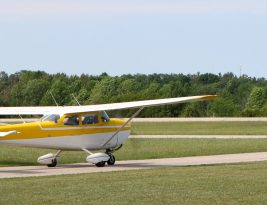Observed weather condition reports are often used in the creation of forecasts for the same area. A variety of different forecast products are produced and designed to be used in the preflight planning stage. The printed forecasts that pilots need to be familiar with are the terminal aerodrome forecast (TAF),
…Search Results for: CFI
Today we’ll think about the effect of temperature on the weather. We’ve covered how solar energy from the sun drives all atmospheric and geological processes on Earth, so now we’ll address it’s role in atmospheric stability. Words and pictures in this post come from the FAA’s
…The majority of airports have some type of lighting for night operations, and the variety and type of lighting systems depends on the volume and complexity of operations at a given airport. We’re going to be examining these types today with help from the FAA’s Pilot’s Handbook of Aeronautical Knowledge.
…The first step in becoming a pilot is selecting an aircraft (whether it’s airplanes, gyroplanes, weight-shift, helicopters, powered parachutes, gliders, balloons, or even airships). The second step is obtaining a medical certificate and Student Pilot’s Certificate if the choice of aircraft is an airplane, helicopter, gyroplane, or airship. Today, with
…In March we looked at the basics of how an internal combustion works. Your airplane’s engine is a four-cycle engine: on the intake stroke, a fuel/air mixture is drawn into the cylinder as the piston moves down; the mixture is then compressed on an upward piston stroke;
…We’ve had a few posts about the Very High Frequency Omnidirectional Range (VOR). Take a look at our introduction and at our CFI’s posts on VOR service volumes and a couple questions that might show up on your exam. Today, we’ll
…Back in February, we introduced the concept of weight and balance and its significance in preflight planning. This week, we’ll look at one of the methods of determining your loaded weight and CG. There are a variety of methods to do this, but this week we’ll illustrate
…This week, we’re taking another look at aviation forecasts and focusing on the terminal aerodrome forecast (TAF), one of the printed forecasts that all pilots need to be familiar with. TAFs are designed to be useful in the preflight planning stage. Here’s how the FAA breaks down a TAF in
…

